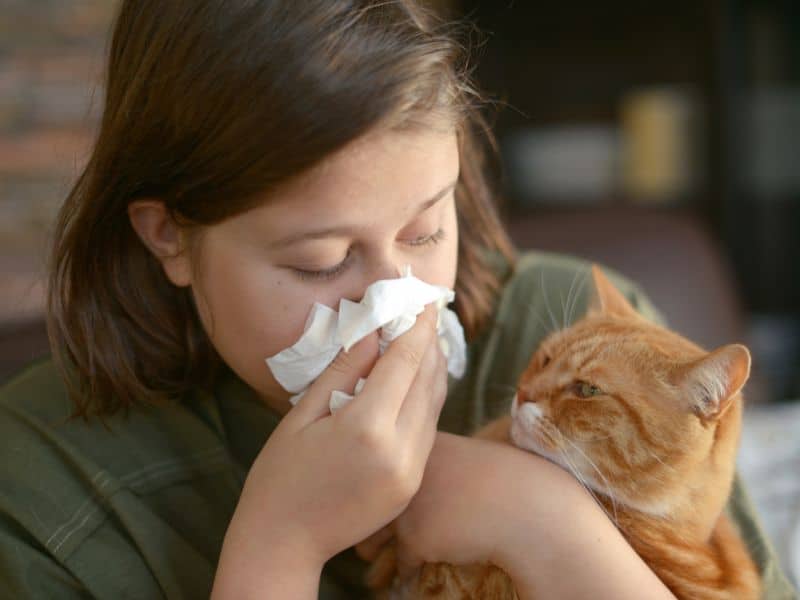One common cause of the failure of an adoption is because it becomes clear that a member of the family may have a “cat allergy”.
People with a cat allergy are allergic to proteins in the cat’s saliva and dander (dried flakes of skin) – it’s not actually the cat’s fur that causes the problem.
Symptoms of cat allergies can include: coughing and wheezing, hives or a rash on the chest and face, red, itchy eyes, redness of the skin where a cat has scratched, bitten, or licked you, runny, itchy, stuffy nose and sneezing.
However, these symptoms can also have other causes other than your cat, and it is important not to immediately blame your cat and seek to re-home him or her.
Many cat owners who suspect that their cat is the cause of mild and manageable allergic symptoms continue to share their lives together.
More severe allergic reactions can be miserable. In such a case, please visit your GP, who can arrange allergy testing for a range of possible causes.
If your cat is found to be a cause of yours your child’s allergies, it is then worth trying to arrange for a friend or relative, to care for your cat for a few weeks to see whether the symptoms alleviate before making the decision to seek a new home for your cat.

Advice for those with mild allergies or who want to try to find ways to continue living together:
Don’t let your cat sleep on the bed of the person with the allergy, and preferably keep the cat out of their bedroom.
Sweep and mop floors and vacuum regularly. Use a Vacuum cleaner with an allergen-proof vacuum cleaner bag or with a high efficiency ‘HEPA’ filter. Replace carpets with hard floor surfaces. Use throws on sofas and change and wash regularly.
Antihistamine medications such as those used for hay fever will bring relief.
Air purifiers are electrical units which filter the air in your home, removing particles of allergens.
Ventilate your home with fresh air every day (but be careful not to leave upstairs windows wide open if cats have access to them and could fall out!).
Consider a course of immunotherapy treatment. Over time, injections containing extracts of the allergen gradually increase tolerance to the source of the allergen.
Petalcleanse is a product that can be bought online and from chemists and vets. It is a lotion containing cleansers which gently remove the dander, saliva, and urine from the coat, and encapsulate the allergen Fel d1. Moisturisers in the lotion condition the coat and skin to further reduce the amount of material shed.
*Many people highly recommend Petal Cleanse, and it is well worth giving this product a try.*
How to have a cat even if someone does have mild allergies
For many people, a house is not a “home” without a pet, so it can be very disappointing if you or family members has a cat allergy.
There are many things you can do to improve the situation if you want to find room for a cat in your life.
Don’t let your cat sleep on the bed of the person with the allergy, and preferably keep the cat out of their bedroom.
Sweep and mop floors and vacuum regularly. Use a Vacuum cleaner with an allergen-proof vacuum cleaner bag or with a high efficiency ‘HEPA’ filter. Replace carpets with hard floor surfaces.
Use throws on sofas and change and wash regularly.
Hay fever medication such as antihistamine usually work, the off the shelf variety available in pharmacists are usually effective. It is possible to get stronger prescription antihistamines if necessary.


